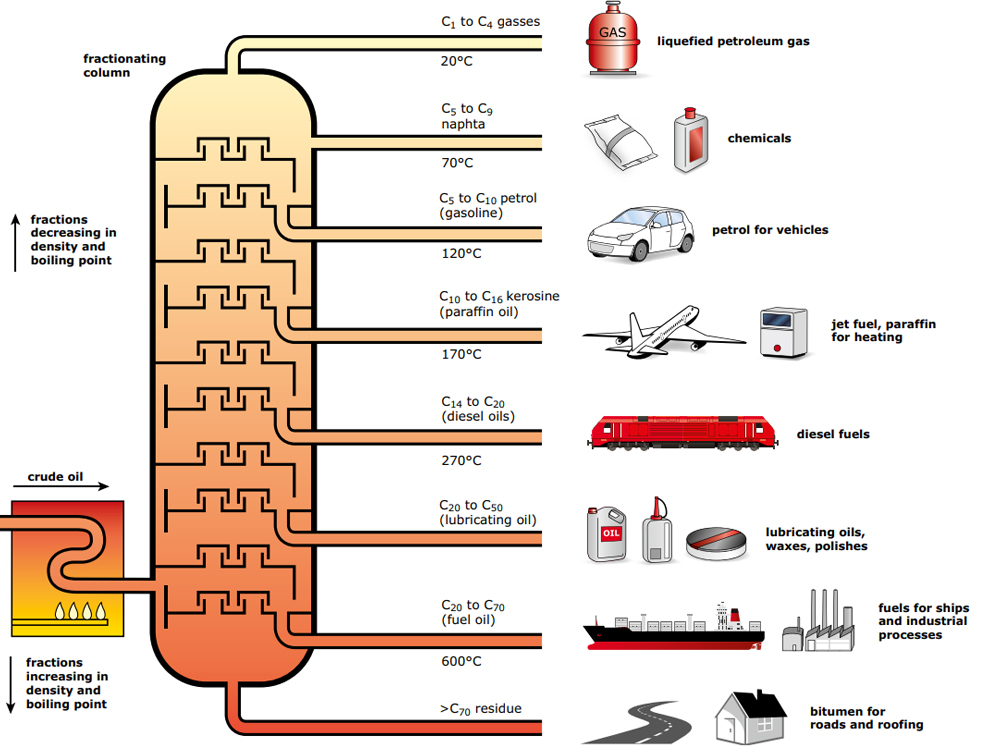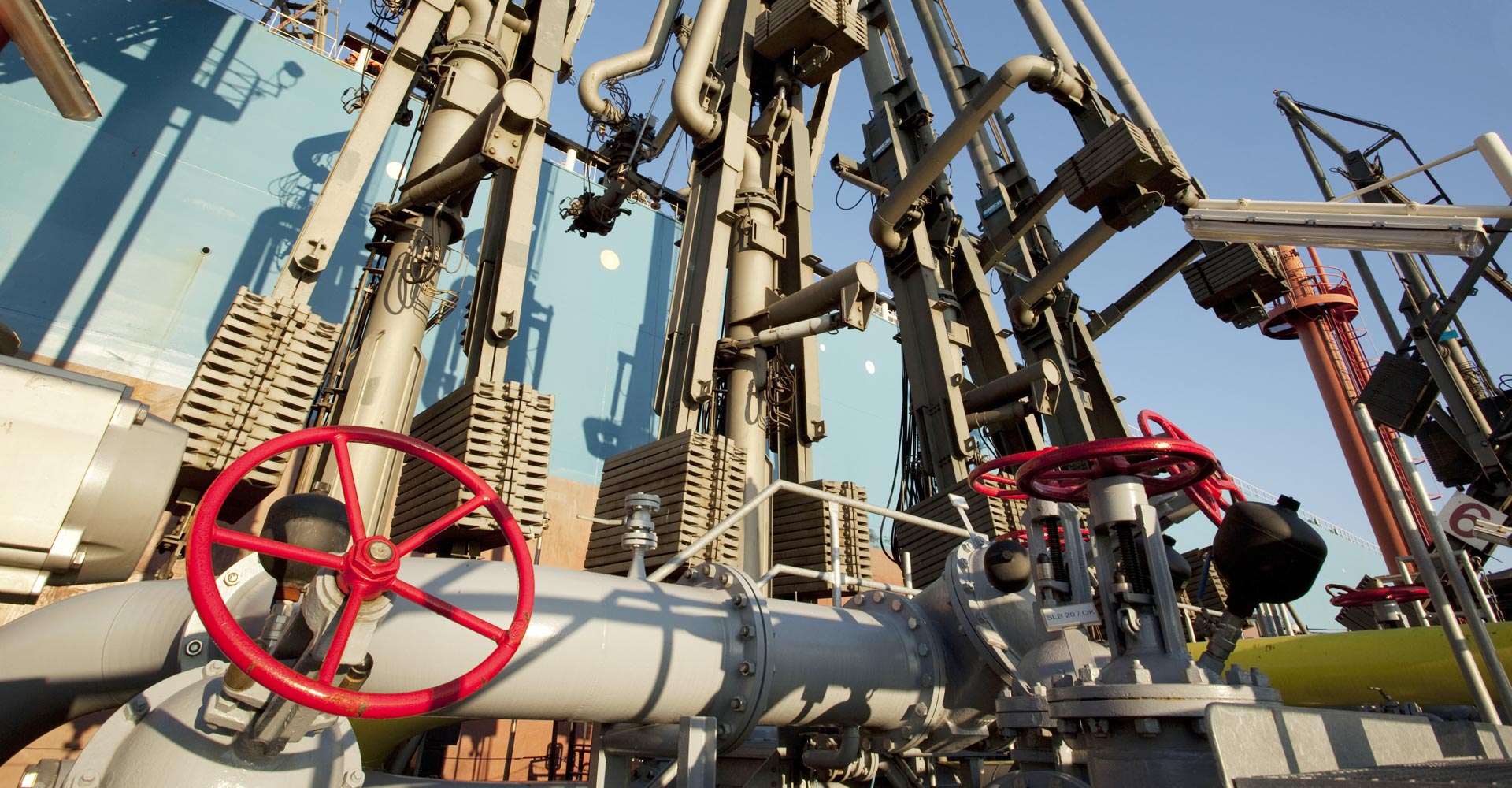The Petroleum Refining Process
Oils, petroleum products, chemicals, biofuels and gases are the substances handled on a daily basis, around the world. Many of these substances are produced by refining petroleum. Petroleum refining is an elaborate process to separate out the various hydrocarbon fractions* from crude oil (unprocessed oil), also called petroleum. The basic five refining processes are:
- separate (by distillation or absorption)
- crack (breaking large chains of molecules into smaller ones)
- reshape (rearranging of molecular structure)
- combine (combining smaller molecules to make larger ones)
- treat (chemical removal of contaminants)
The hydrocarbons (compounds) differ in their hydrocarbon chain lengths, resulting in different boiling points: The longer the chain, the higher the boiling point. Refiners lump certain compounds into groups called fractions. The oldest and most common way to separate them is fractional distillation: basically, you heat up (boil) crude oil (in the fractional distillation column). As the vapor rises through the trays in the column, it cools down and condenses to form a liquid. The various liquid fractions are collected in trays, and may then be passed to condensers for further cooling before they are transferred to storage tanks.
However, very few components coming out of the fractional distillation column are ready for the market. Many of them require further chemical processing (e. g. reshaping, combining) into other fractions. Distillated and chemically processed fractions are then treated to remove impurities, such as organic compounds containing sulfur, nitrogen, oxygen, water, dissolved metals and inorganic salts. After being treated, the fractions are cooled and then blended to make various products. Eventually, some of these products are brought by vessel, pipeline, train or truck to the terminals.
*Hydrocarbons contain a lot of energy. They are molecules that contain hydrogen and carbon and come in various lengths and structures.
The Refining Process
From crude oil to end product, due to temperature difference across the fractional distillation column (hot at the bottom, cool at the top)

Oiltanking and its tank terminals provide comprehensive logistics solutions for the storage and handling of petroleum products, chemicals, gases and other products.
Status: December 2015
All information subject to change. Errors and omissions excepted.

